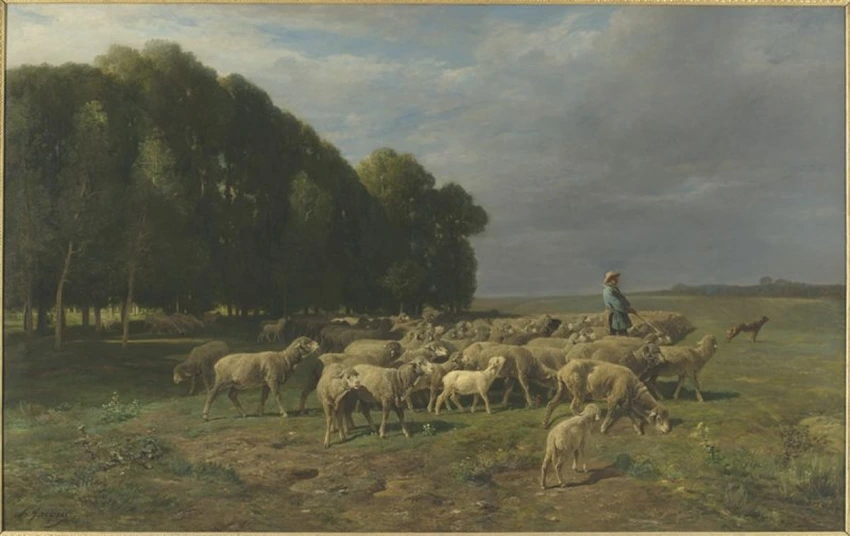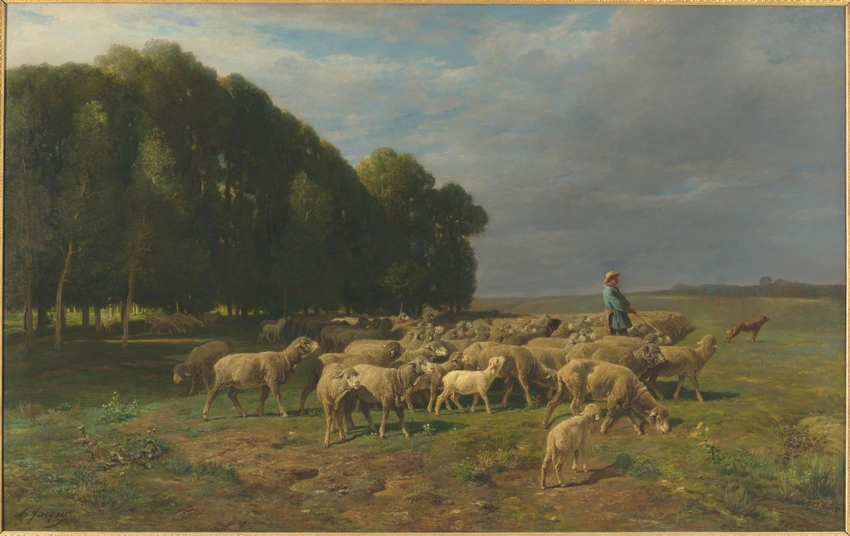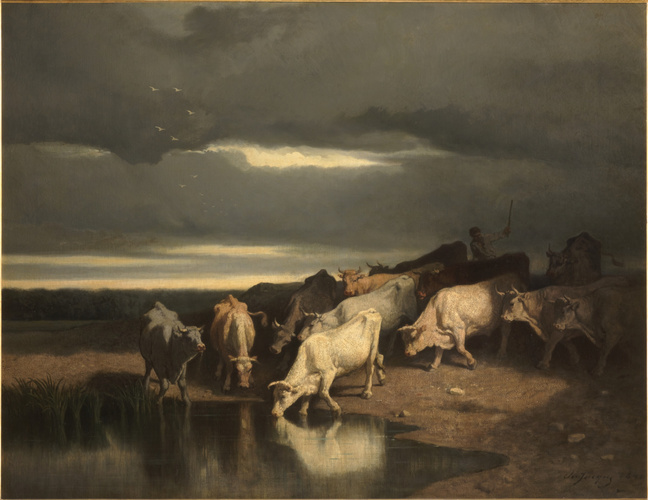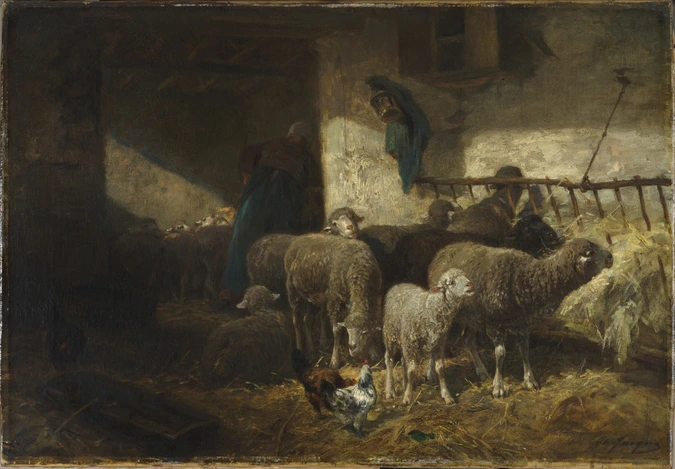Troupeau de moutons dans un paysage
During the 1861 Salon, the writer Alfred Nettement went into raptures about this painting by Charles Emile Jacque, writing: "See how the light dances under these trees! These sheep are real. You have come across them on the plain, dirty and forlorn, with that calm, dazed expression that is typical of these poor beasts....". In the clear light of the great plain that stretched between Barbizon and Chailly, a place that also inspired Jean-François Millet, Jacque produced a work of intense realism. It was this aspect that also struck Charles Moreau-Vauthier at the beginning of the 20th century. In his book on the great masters of painting he wrote: "Here we find ourselves in the middle of the countryside...we recognise the sweeping horizons and the occasional green clumps of trees dotted about against the sky. When we look closely at the sheep, we become aware of the artist's profound knowledge of the animal: the structure of its body, its appearance and its expression. The watchfulness of the shepherd and the sheep, the alert figure of the dog, all contribute to extending the painting even further, giving us the impression that this vast plain continues well beyond the frame".
Landscape with Flock of Sheep is typical of the resurgent interest in nature that swept through French literature in the late 18th century, and that reached its peak in painting from the 1830s on. Jules and Edmond de Goncourt even declared at the 1855 Universal Exhibition that "landscape is the great success of modern art; it is a triumph of 19th century painting". In fact, in the wake of the painters of the Barbizon school, the landscape became established as a major theme in pictorial creation. Some artists, like Jacque, no longer held back from rendering peaceful scenes of the French countryside on a scale traditionally reserved for history painting. Measuring almost two metres by three, this painting also reveals a desire to overturn the traditional hierarchy of genres, a move that had exquisite precedents in 17th century Dutch landscape painting.








